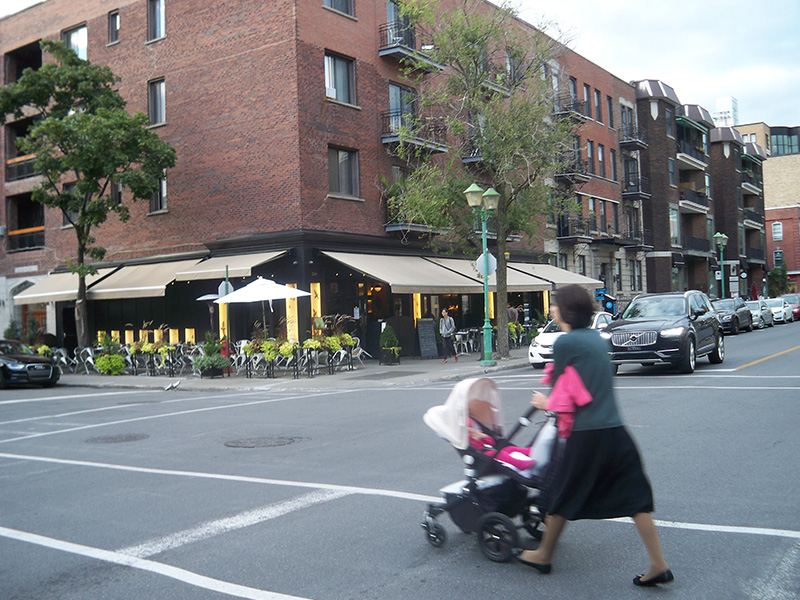The large chassidic community in Outremont has exercised its growing political clout to force the borough to hold a referendum on its controversial proposed restriction on places of worship.
A referendum will be held before the end of the year on a rezoning bylaw that would ban new places of worship – of any religion – on Bernard Avenue, a major commercial artery, the borough announced.
Or will it? A longtime community leader, Alex Werzberger, thinks it’s possible that the borough council will withdraw the bylaw rather than proceed with a referendum that is costly and would only exacerbate divisions among residents.
The next council meeting is scheduled for Oct. 3, when the referendum date and logistics may be set.
Under the Quebec law regulating urban planning, Outremont is required to hold the referendum because a minimum number of eligible people signed a public registry on Sept. 8, unless it repeals the bylaw. The exact number of required signers – 367 – was recorded due largely to the Chassidim’s mobilization.
READ: BOROUGH, CHASSIDIM AT ODDS OVER PROPOSED BAN ON PLACES OF WORSHIP
Since the bylaw was first proposed almost a year ago, the Chassidim have vigorously opposed it, arguing that they need new places of worship to accommodate their increasing numbers.
“They realize we can’t be ignored anymore. With 25 per cent of the population today, we have electoral power,” Werzberger said. (According to 2011 statistics, Jews represented 19 per cent of Outremont’s population.)
If a referendum is held, Werzberger thinks bylaw opponents have a good chance of winning, because in the zone affected, Chassidim comprise 40 to 45 per cent of the residents. He believes there is not sufficient interest in the issue among other residents, or at least, not enough for them to go out and vote.
A registry was also open on Sept. 8 for another street covered by the original bylaw, Laurier Avenue, also a business sector, but only four signatures were recorded, well short of the 176 required. The ban on new places of worship is now in force there.
The Chassidim were less concerned with that street, which, unlike Bernard, is not in the heart of their neighbourhood.
READ: CHASSIDIM VOW COURT ACTION IF REZONING PROCEEDS
The bylaw was adopted by a majority of council members on Aug. 1. However, its first reading was last December, when it was passed by the council. Only Councillor Mindy Pollak, who is chassidic, has consistently voted against it.
The deliberative process was repeated over the past year, because an error was found in a map of the zones distributed during the public consultation.
Werzberger, a member of the Satmar community, is among a number of prominent Chassidim who have vowed to take legal action if the bylaw ever comes into effect, on the grounds that it infringes on the constitutional guarantee of religious freedom.
Last December, their lawyer, prominent civil rights defender Julius Grey, sent a formal letter to the council warning that they will go to court, if necessary. Werzberger said such action is still “probable.”
They also view the bylaw as the latest in a series of measures taken by Outremont over the years targeting the Chassidim. A couple of years ago, a restriction on the length of time sukkahs could be erected at private homes was under consideration by the council.
Werzberger thinks the borough is acquiescing to a relatively small number of residents, probably no more than 300, who consistently complain about the Chassidim, whether it be for “illegal” synagogues and schools or parking violations or holiday celebrations, such as Purim.
The council, headed by borough mayor Marie Cinq-Mars, wanted the ban on new places of worship because it believed it would revitalize Bernard and Laurier if they were reserved primarily for businesses. Those fashionable streets, known for their shops, restaurants and architecture, have declined in recent years.
A similar restriction on places of worship was enacted on Outremont’s other main commercial artery, Van Horne Avenue, in 1999.
There is now one synagogue and a second under construction on Bernard. The issuing of a permit last year for that chassidic congregation sparked a demand from certain residents for a moratorium on any more.
Bylaw opponents, who include non-Chassidim, have argued that the borough has not undertaken an independent study to back up the presumption that banning additional places of worship would stimulate commerce.
“Five or six stores have closed on Bernard in the past six months. People are shopping on the Internet or at big-box stores,” Werzberger said.
“Businesses will go where the people are. Look at Park Avenue, where there are new synagogues. At least, 10 new Jewish stores have opened.”
Other Montreal boroughs have also put in place or are considering restrictions on places of worship in commercial neighbourhoods.
Outremont wants to restrict new places of worship to the northeastern section of the borough. The Chassidim have rejected this idea, because it is a 20-minute walk from where they live and is an unattractive and possibly dangerous area, because it is industrial and next to railway tracks.
In the words of Pollak, confining new synagogues would have the effect of “ghettoizing” the community.
For Werzberger, the places of worship ban is “just a dumb excuse to squeeze us out of Outremont, but we are not going anywhere.”
